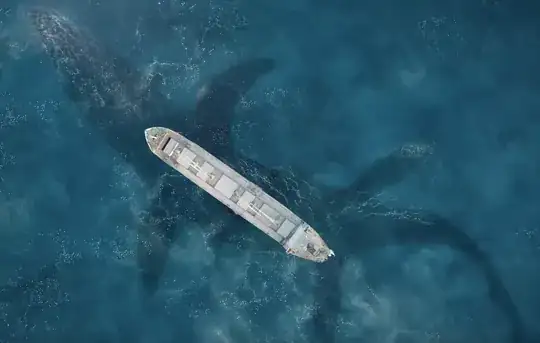I think the most important property is a suitable body for the harness connecting the cog to the tug (?) animals, or swim team -- sounds like a bad pun.
The cog will need to be a little extra buoyant in the bow to oppose the downward force generated by the swimming monsters.
The dermis of most aquatic creatures is not going to accommodate a hemp rope looped over their bodies since it would rub and wear too much. And, fish don't have shoulders so it will be a challenge to make a yoke that will efficiently transfer the fishes thrust to the ship.
For those two reasons, I can see giant sea turtles as being draft animals. The yoke could be mounted to their shell without causing them pain or distress. Then, all the yokes could connect to a single tow cable.
If turtles are not attractive, then I could imagine a yoke that conformed to the fishes face, and the fish would swim into it to pull the ship forward. Alternatively, these yokes could be mounted anywhere on the ships hull. The inner surface would be a soft felt that protected the piscine dermis from rubbing -- like moleskin. The body would wriggle and friggle to produce the thrust.
I think as long as the creatures are large enough to overcome the friction between the water and the hull, and the waves and the hull, then they'll be able to accelerate the ship to its best speed.
Another thought, giant remora-like fish attach themselves to bottom of the copper plated hull and move the ships around, except these actually swim rather than try to ride for free.
Now, ideas about domestication and such until a specific species is identified.
